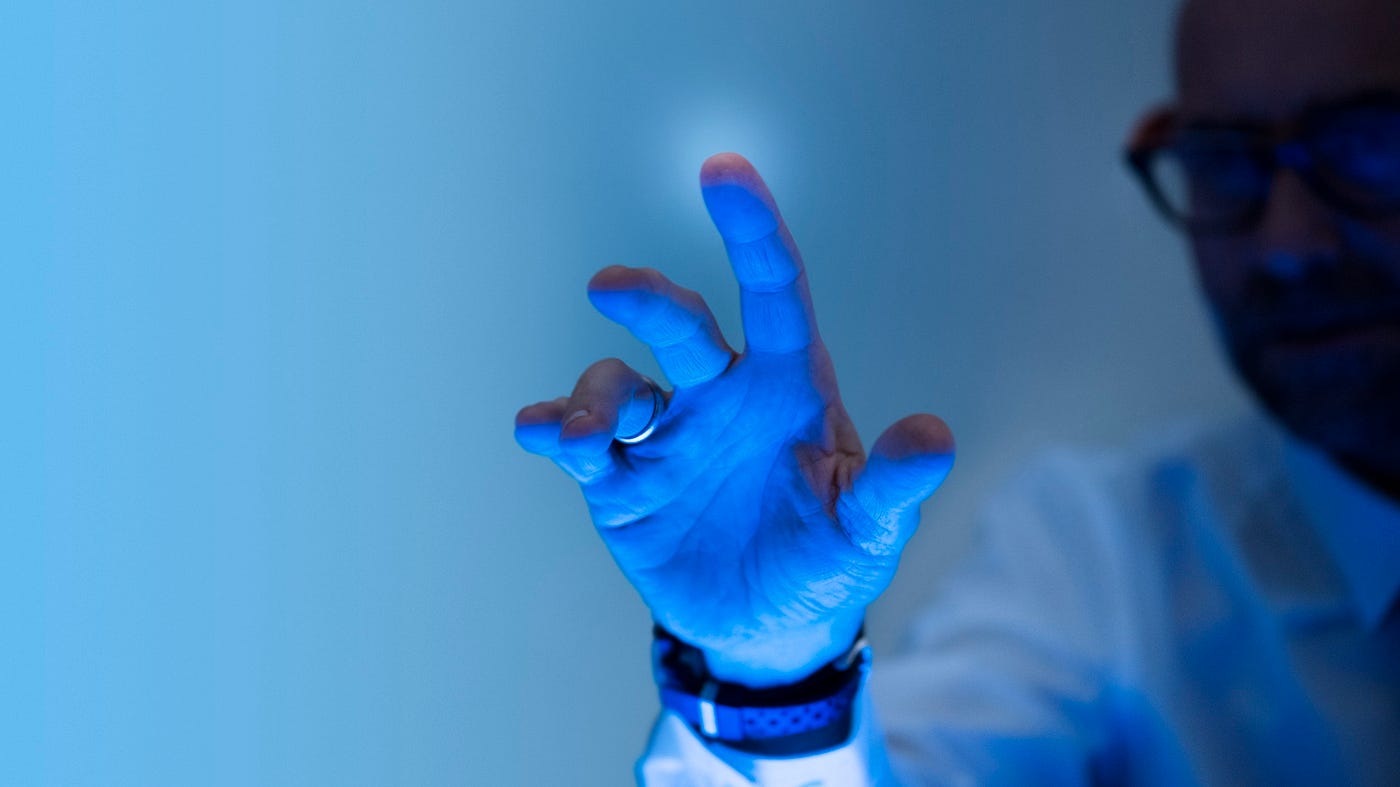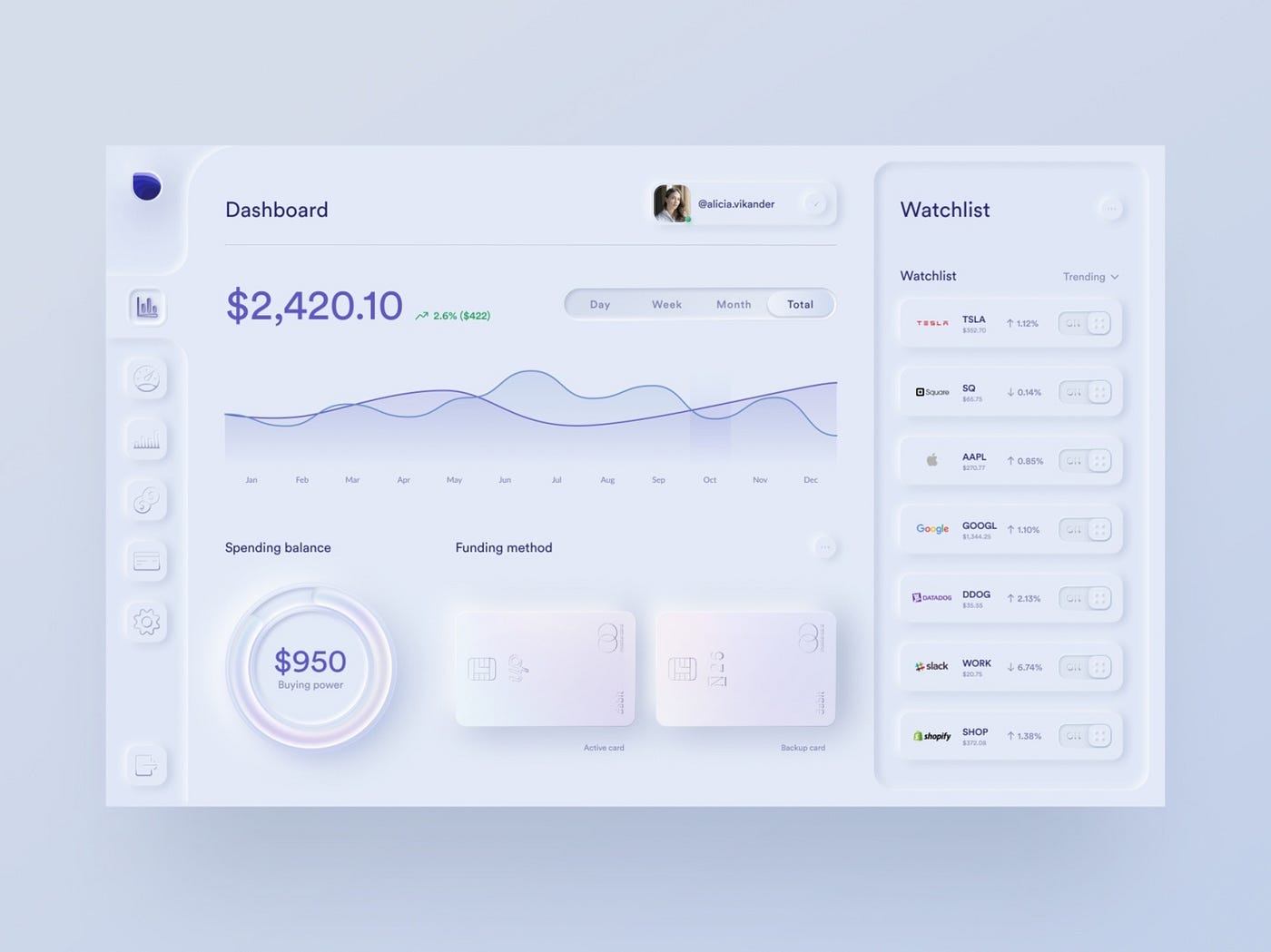In the ever-evolving landscape of digital products and services, the role of UI/UX design has become paramount. User Interface (UI) and User Experience (UX) design are no longer just about making things visually appealing; they are the cornerstone of creating smooth, intuitive, and engaging digital experiences. As technology continues to advance at a rapid pace, so do the trends in UI/UX design. In this article, we will delve into the top UI/UX design trends shaping the digital landscape in 2024 and beyond.
Top UI/UX Design Trends in 2024
As a designer, you must be aware of the following UI/UX trends in 2024:
- AI-integrated Design
- Voice User Interface
- Augmented Reality (AR) and Virtual Reality (VR) Integration
- 3D Graphics and Illustrations
- Gesture-Based Navigation
- Emotional Design
- Responsive Design
- Dark Mode
- Skeuomorphism
- Clean and Tidy Layouts
- Minimalism
1. AI-integrated Design
Artificial Intelligence (AI) will play a Important role in UI/UX design in 2024. AI-integrated design involves the incorporation of artificial intelligence algorithms and technologies into UI/UX design processes to enhance user experiences. From personalized recommendations to predictive analytics, AI is revolutionizing how users interact with digital interfaces. For example, chatbots powered by AI can provide real-time assistance and improve customer support experiences. However, adopting AI-integrated design comes with its challenges, such as ensuring data privacy and maintaining transparency. Designers can embrace this trend by exploring AI-powered design tools and staying updated on AI advancements.
2. Voice User Interface (VUI)
Voice User Interface (VUI) is another important UI/UX Design trends in 2024. It allows users to interact with digital devices using voice commands. The popularity of smart speakers and virtual assistants like Siri and Alexa has propelled the adoption of VUI in various applications, including smart home devices and automotive interfaces. Implementing VUI requires careful consideration of speech recognition accuracy and natural language understanding. Designers can optimize VUI by conducting user research and designing conversational interfaces that mimic human interactions.
3. Augmented Reality (AR) and Virtual Reality (VR) Integration
Augmented Reality (AR) and Virtual Reality (VR) integration bring digital experiences to life by overlaying virtual elements onto the real world or immersing users in virtual environments. From gaming and education to retail and marketing, AR and VR Technology offer immersive experiences that captivate users’ attention. However, designing AR and VR interfaces involves overcoming technical constraints and ensuring flawless integration with physical environments. UI/UX Designers can leverage AR and VR tools and frameworks to create immersive experiences that resonate with users.
4. 3D Graphics and Illustrations
3D graphics and illustrations add depth and realism to digital interfaces, enhancing visual appeal and storytelling. From product showcases to immersive websites, 3D graphics are being used to create interactive and engaging experiences. However, incorporating 3D elements into UI/UX design requires careful optimization for performance and accessibility. Designers can experiment with 3D modeling software and rendering techniques to create captivating visual experiences that leave a lasting impression on users.
5. Gesture-Based Navigation
Gesture-based navigation enables users to interact with digital interfaces using intuitive gestures such as swiping, pinching, and tapping. From smartphones and tablets to wearable devices and interactive displays, gesture-based navigation offers a natural and immersive way to navigate digital content. Designing gesture-based interfaces requires thoughtful consideration of user feedback and ergonomic principles. Designers can optimize gesture-based navigation by conducting usability testing and providing visual cues for gesture interactions.

6. Emotional Design
Emotional design focuses on evoking emotional responses from users through visual aesthetics, storytelling, and interactive elements. By incorporating elements such as color psychology, typography, and animation, designers can create emotionally resonant experiences that forge deeper connections with users. From brand identity to user onboarding, emotional design plays a crucial role in shaping perceptions and fostering user engagement. Designers can leverage emotional Web design principles to create memorable experiences that elicit positive emotions and reinforce brand affinity.
7. Responsive Design
Responsive design ensures that digital interfaces adapt smoothly to different screen sizes and devices, providing consistent user experiences across platforms. With the proliferation of smartphones, tablets, and wearable devices, responsive design has become essential for reaching users on-the-go. However, designing responsive interfaces requires careful planning and consideration of user contexts and device capabilities. Designers can embrace responsive design by adopting fluid layouts, flexible grids, and media queries to create adaptive experiences that prioritize usability and accessibility.
8. Dark Mode
Dark Mode is play another important role in UI/UX design trends in 2024. Dark mode, also known as night mode or dark theme, switches the color scheme of digital interfaces to darker tones, reducing eye strain and conserving battery life, particularly in low-light environments. From mobile apps to operating systems and websites, dark mode has gained popularity for its aesthetic appeal and usability benefits. However, implementing dark mode requires careful consideration of contrast ratios and readability. Designers can optimize dark mode by selecting appropriate color palettes and providing options for users to customize their preferences.
9. Skeuomorphism
Skeuomorphism involves incorporating real-world elements and textures into digital interfaces to make them feel familiar and intuitive. From skeuomorphic icons and buttons to textured backgrounds and simulated materials, skeuomorphism adds visual depth and tactile feedback to digital experiences. However, striking a balance between realism and usability is crucial to avoid overwhelming users with unnecessary visual clutter. Designers can embrace skeuomorphism by leveraging design patterns and affordances that bridge the gap between digital and physical interactions.

10. Clean and Tidy Layouts
Clean and tidy layouts prioritize simplicity, clarity, and organization, allowing users to focus on essential content and tasks without distractions. By employing whitespace, grid systems, and minimalist aesthetics, designers can create visually appealing interfaces that promote usability and readability. From landing pages to user interfaces, clean and tidy layouts enhance user comprehension and navigation. Designers can adopt clean and tidy layouts by prioritizing content hierarchy, minimizing visual clutter, and maintaining consistency across screens.
11. Minimalism
Minimalism advocates for simplicity, clarity, and restraint in design, stripping away unnecessary elements and focusing on essential functionality. By emphasizing whitespace, typography, and visual hierarchy, minimalist design creates elegant and intuitive user experiences. From user interfaces to branding and packaging, minimalism communicates sophistication and refinement. However, achieving effective minimalism requires careful attention to detail and restraint in design decisions. Designers can embrace minimalism by prioritizing content over decoration, using negative space to guide user attention, and maintaining consistency in visual language.
Conclusion
In conclusion, staying abreast of the latest UI/UX design trends is essential for creating innovative and user-centric digital experiences. From AI-integrated design to minimalism, each trend offers unique opportunities and challenges for designers to explore. By embracing these trends and incorporating them thoughtfully into their design processes, designers can create immersive, intuitive, and engaging experiences that delight users and drive business success in the rapidly evolving digital landscape.




